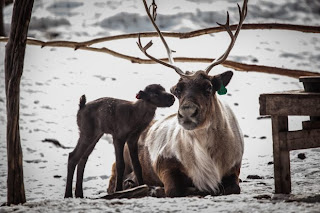
What is an economy? Sociologists define an economy as the structured system of production and distribution of goods and services. Throughout most of its history, Alaska has been characterized by a subsistence economy, meaning that local communities produced food, tools, shelter, clothing and footwear, healthcare, art, music, water, transportation, and other goods and services from the land, with largely internal distribution systems. So, for example, a typical Alaska community would have consisted of a handful of large, extended families who gathered berries, lichens, greens, mussels, eggs, and other small foods; hunted larger animals such as caribou, ducks, whales, geese, moose, and seals; fished all year round; used hides, sticks, bones, branches, trees, rocks, and snowblocks for shelter; utilized herbs, shamanism, and other health crafts to cure illness and injuries; made their footwear and clothing from skins and plant fibers; and distributed the goods and services they produced among themselves with some bartering and trading with other local communities. In subsistence economies, the community owns the means of production--in other words, the land, tools, animals, craft knowledge, and everything else needed to produce goods and services were owned in common by the people themselves.
With the immigration of new settlers into Alaska, new capitalist economic systems were introduced and the older subsistence economies could not successfully compete. In a capitalist economy, goods and services are produced by people who sell their labor to a tiny group who owns the means of production. Under capitalism, the means of production most commonly mean the factories, tools, equipment, land, animals, energy, trucks, railroads, and craft knowledge (intellectual capital). And only a small fraction of the people actually involved in production and distribution own these things. They use their ownership in these things (capital) to produce profit for themselves. Local knowledge, local crafts, local culture, local labor--these things are now said to be commoditized, or sold to make profit for the owners of the means of production (capitalists).
Today, most of Alaska is characterized by what sociologists call mixed economies: there are still some elements of subsistence economies that are left-over from earlier days, but markedly transformed by the influences of capitalism. In rural Alaska, one can still see how important subsistence economic systems are to the people, while at the same time, one can see how capitalism has reshaped the very way rural people even think about their economies.
In this section, the students will explore the various local economies of rural Alaska. Some of the questions we will examine include:
- how have extraction industries, such as gold, coal, and copper mining, oil production, whaling, and timber affected local communities? How have local economies been affected? Are the benefits and costs of extraction industries equitably distributed across rural Alaska?
- how has commercialized fishing (especially factory trawlers for cod, halibut, and salmon) affected local fishing economies? What rural Alaska communities are especially affected?
- in what Alaska communities do subsistence economies continue to thrive? What communities have adopted mostly capitalist economic structures?
- how has the building of US military bases affected rural Alaska economies?
- what are some new, emerging economic possibilities for rural Alaska? In particular, see if you can find out how medicine and healthcare facilities, craft guilds, industrial prisons, university annex campuses, and eco-tourism may have affected local Alaska economies.
- how bright (or dim) is rural Alaska's economic future?

Here is a graph that Amelia created about the role of the military in Alaska's economy. What other industries, governmental entities, and/or NGOs shape our rural economy?









 dissertation topic a decade ago. At one time, there were 200 lesbian land-based collectives in the US, but now there are probably fewer than a dozen that are truly cooperative and communal in their organization. The lesbian land movement founded a quarterly magazine that continues to publish, and now hosts blogs and other online resources for womyn (and, increasingly, others) who wish to share a life on land with others like themselves. The photo above shows women at an Oregon land trust at a board meeting.
dissertation topic a decade ago. At one time, there were 200 lesbian land-based collectives in the US, but now there are probably fewer than a dozen that are truly cooperative and communal in their organization. The lesbian land movement founded a quarterly magazine that continues to publish, and now hosts blogs and other online resources for womyn (and, increasingly, others) who wish to share a life on land with others like themselves. The photo above shows women at an Oregon land trust at a board meeting.





